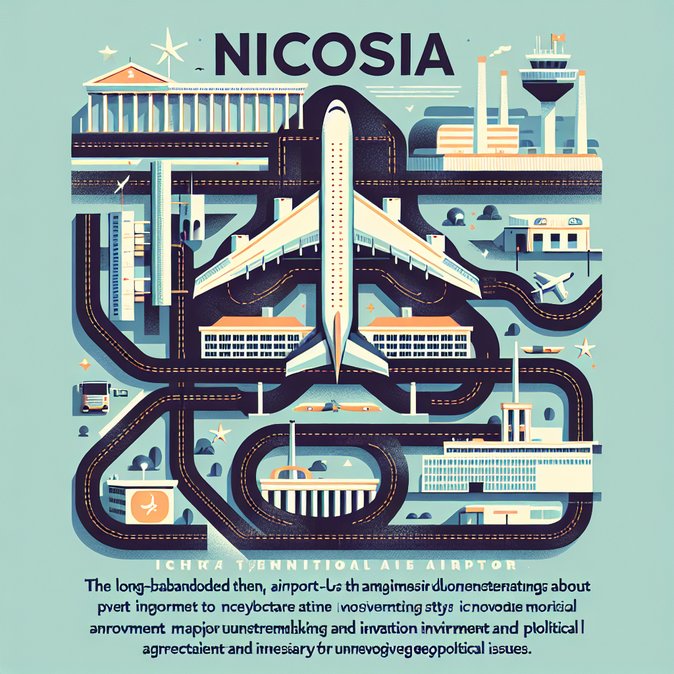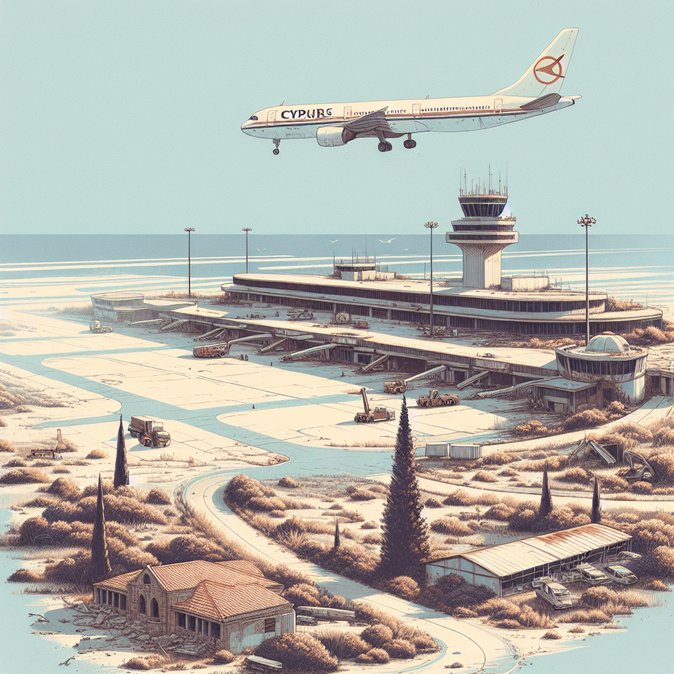
Striking photographs published on 23 November by Greek news outlet ProtoThema have rekindled public debate over the future of Nicosia International Airport, the island’s once-busiest aviation hub that has lain derelict inside the UN buffer zone since the 1974 Turkish invasion. The article, which quickly trended on Cypriot social media, shows bullet-scarred terminal halls, rusting jet bridges and a Cyprus Airways Trident airliner slowly disintegrating on the apron.
The airport, opened in 1968, handled more than a million passengers annually before hostilities forced its abrupt closure. Its loss reshaped the country’s mobility map: Larnaca Airport was built from scratch within two years, Paphos followed in the 1980s, and the capital became the only EU capital city without a functioning civilian airport. Half a century later, Nicosia’s skeletal shell is guarded by UNFICYP peacekeepers, accessible only with special permission.
![Frozen Gateway: 51 Years On, Abandoned Nicosia Airport Remains a Potent Symbol for Cypriot Mobility]()
Periodically, diplomats float proposals to reopen the site under joint administration as a confidence-building measure—most recently in 2021 when UN envoy Jane Holl Lute suggested a cargo-only operation that could benefit both communities. Talks stalled over security protocols and customs jurisdiction. Transport economists estimate that refurbishing the airport to modern standards would cost at least €400 million, but argue that a centrally located hub could slash ground-transfer times for business travellers and foster new low-cost connections.
For global-mobility planners the airport’s fate is not merely symbolic. A reopened Nicosia hub could diversify entry points, ease congestion at Larnaca during peak tourist months and provide corporate shuttles direct access to the capital’s business districts and special-licence International Business Centres (IBCs). Conversely, continued dereliction perpetuates reliance on long road transfers that add hidden costs to assignment budgets.
While no formal negotiations are on the table, the renewed media spotlight has prompted the Cyprus Chamber of Commerce to call for an independent feasibility study. Multinational firms with significant headcount in Nicosia—particularly in fintech and professional services—are likely to lobby quietly for any initiative that improves connectivity. Until politics align, however, the island’s original gateway will remain a poignant reminder of mobility lost to conflict.
The airport, opened in 1968, handled more than a million passengers annually before hostilities forced its abrupt closure. Its loss reshaped the country’s mobility map: Larnaca Airport was built from scratch within two years, Paphos followed in the 1980s, and the capital became the only EU capital city without a functioning civilian airport. Half a century later, Nicosia’s skeletal shell is guarded by UNFICYP peacekeepers, accessible only with special permission.

Periodically, diplomats float proposals to reopen the site under joint administration as a confidence-building measure—most recently in 2021 when UN envoy Jane Holl Lute suggested a cargo-only operation that could benefit both communities. Talks stalled over security protocols and customs jurisdiction. Transport economists estimate that refurbishing the airport to modern standards would cost at least €400 million, but argue that a centrally located hub could slash ground-transfer times for business travellers and foster new low-cost connections.
For global-mobility planners the airport’s fate is not merely symbolic. A reopened Nicosia hub could diversify entry points, ease congestion at Larnaca during peak tourist months and provide corporate shuttles direct access to the capital’s business districts and special-licence International Business Centres (IBCs). Conversely, continued dereliction perpetuates reliance on long road transfers that add hidden costs to assignment budgets.
While no formal negotiations are on the table, the renewed media spotlight has prompted the Cyprus Chamber of Commerce to call for an independent feasibility study. Multinational firms with significant headcount in Nicosia—particularly in fintech and professional services—are likely to lobby quietly for any initiative that improves connectivity. Until politics align, however, the island’s original gateway will remain a poignant reminder of mobility lost to conflict.







